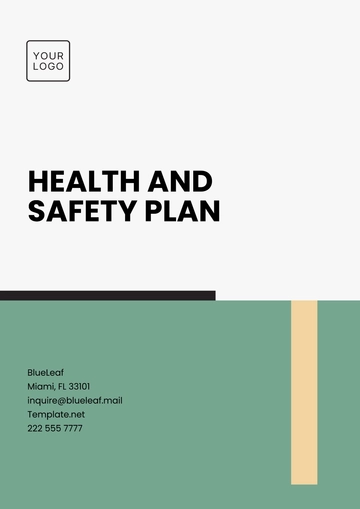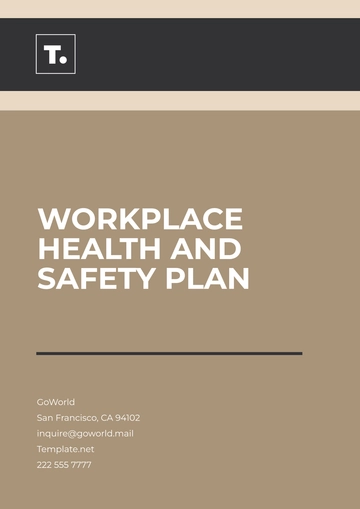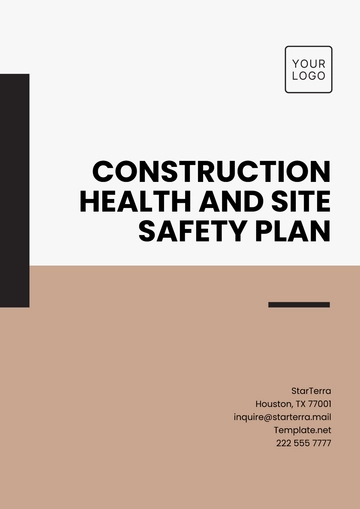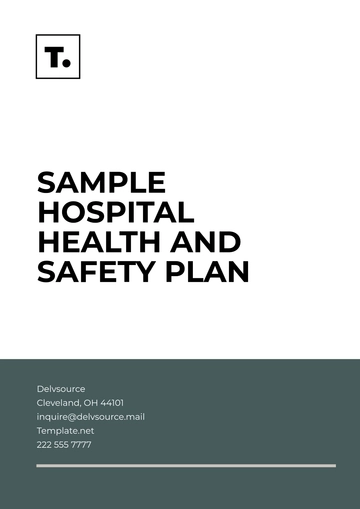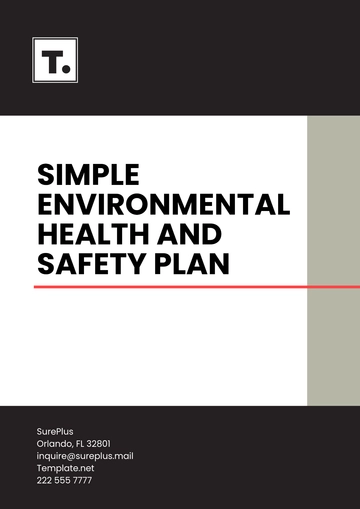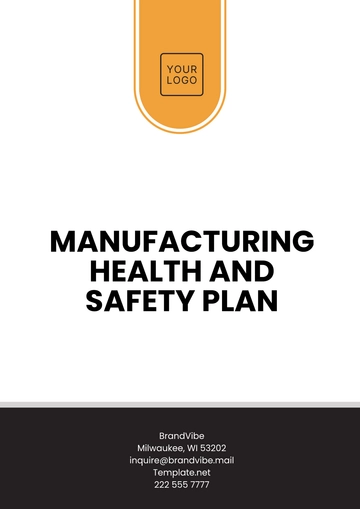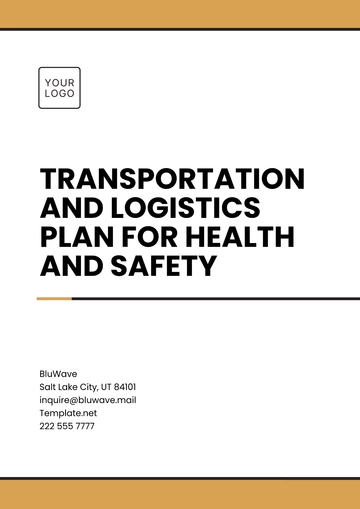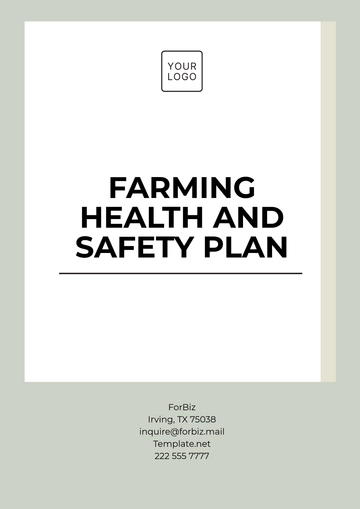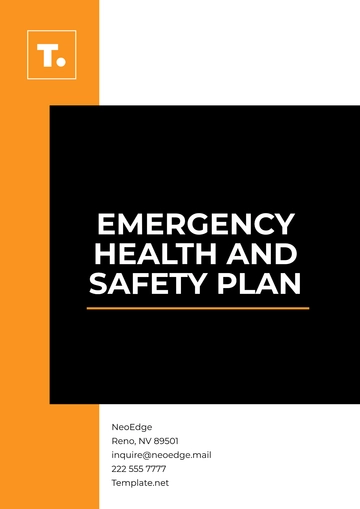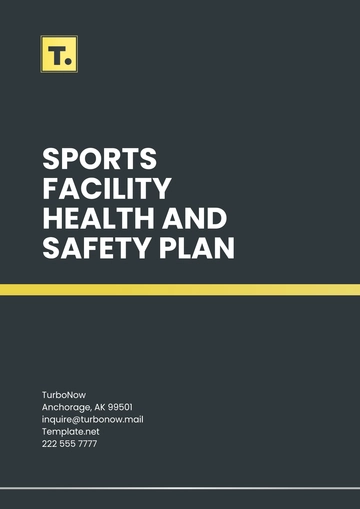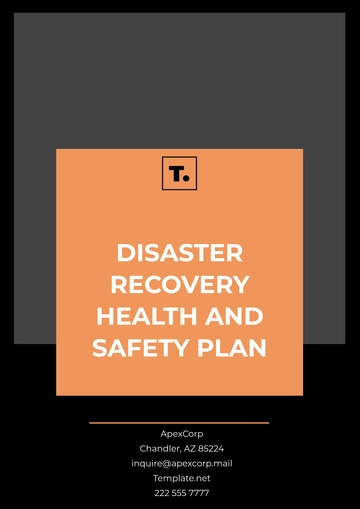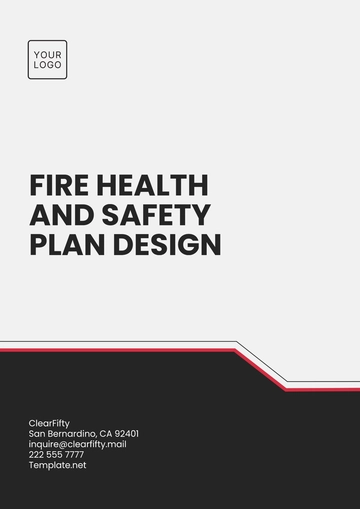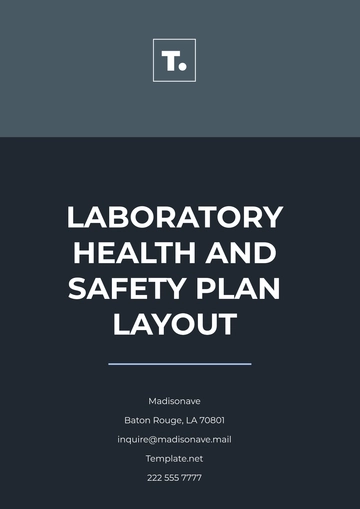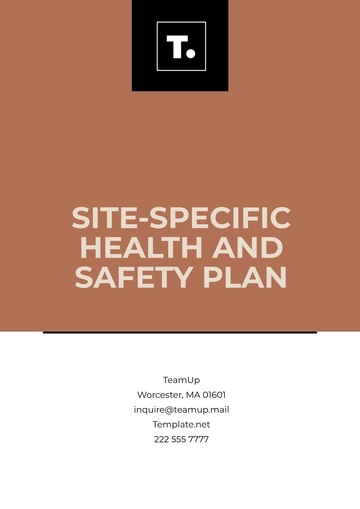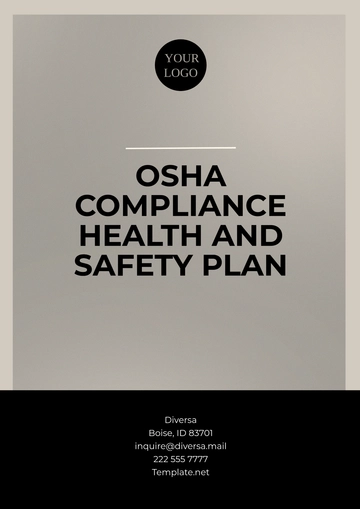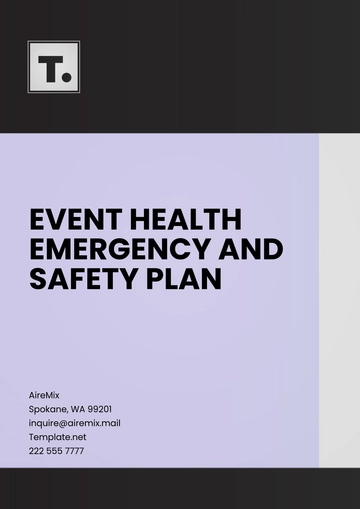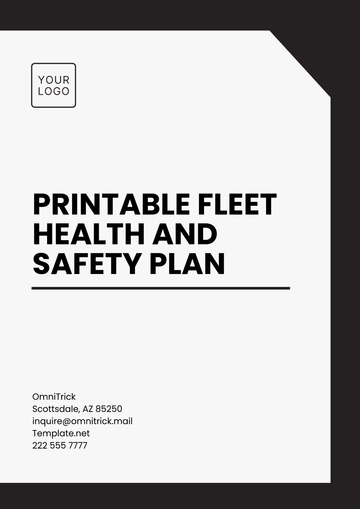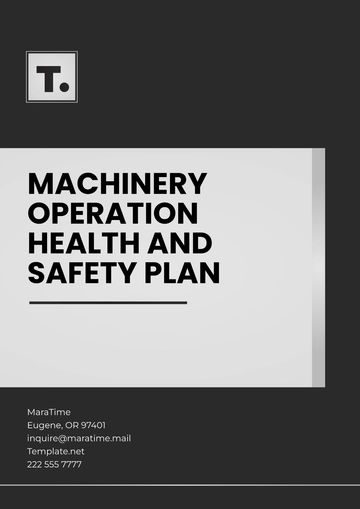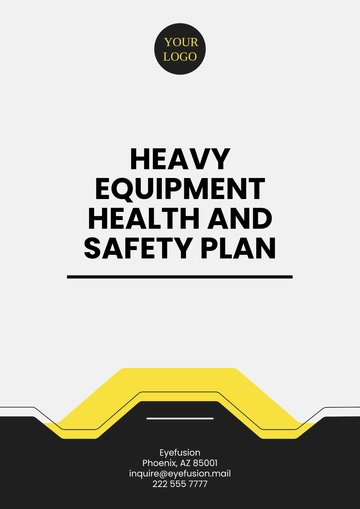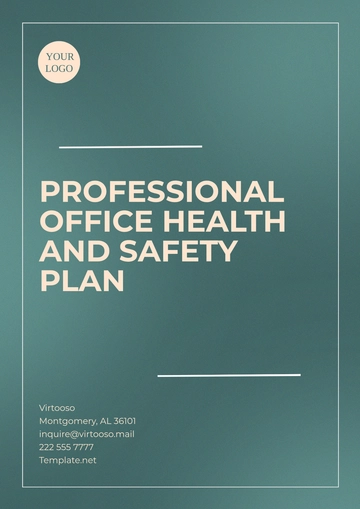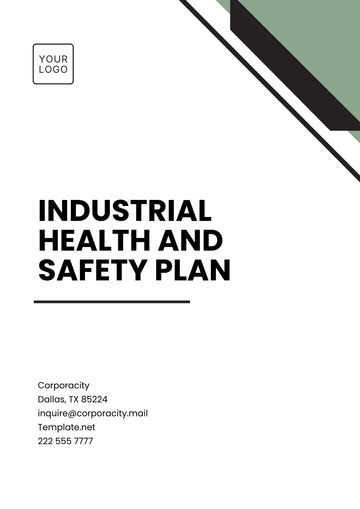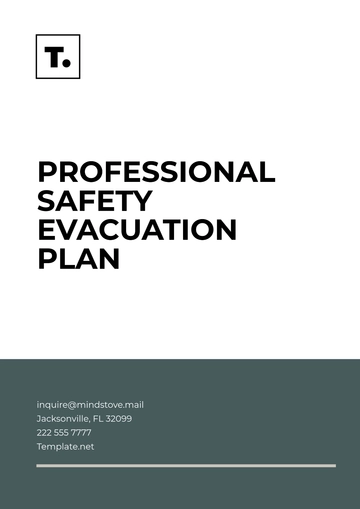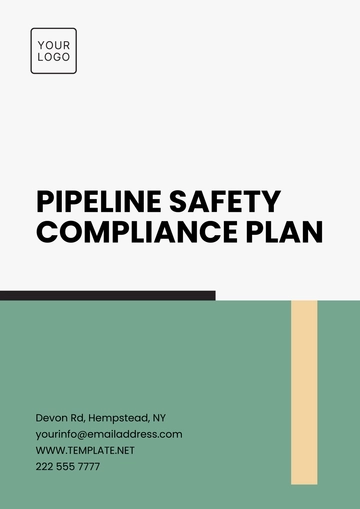Free Warehouse Operations Safety Plan Printable
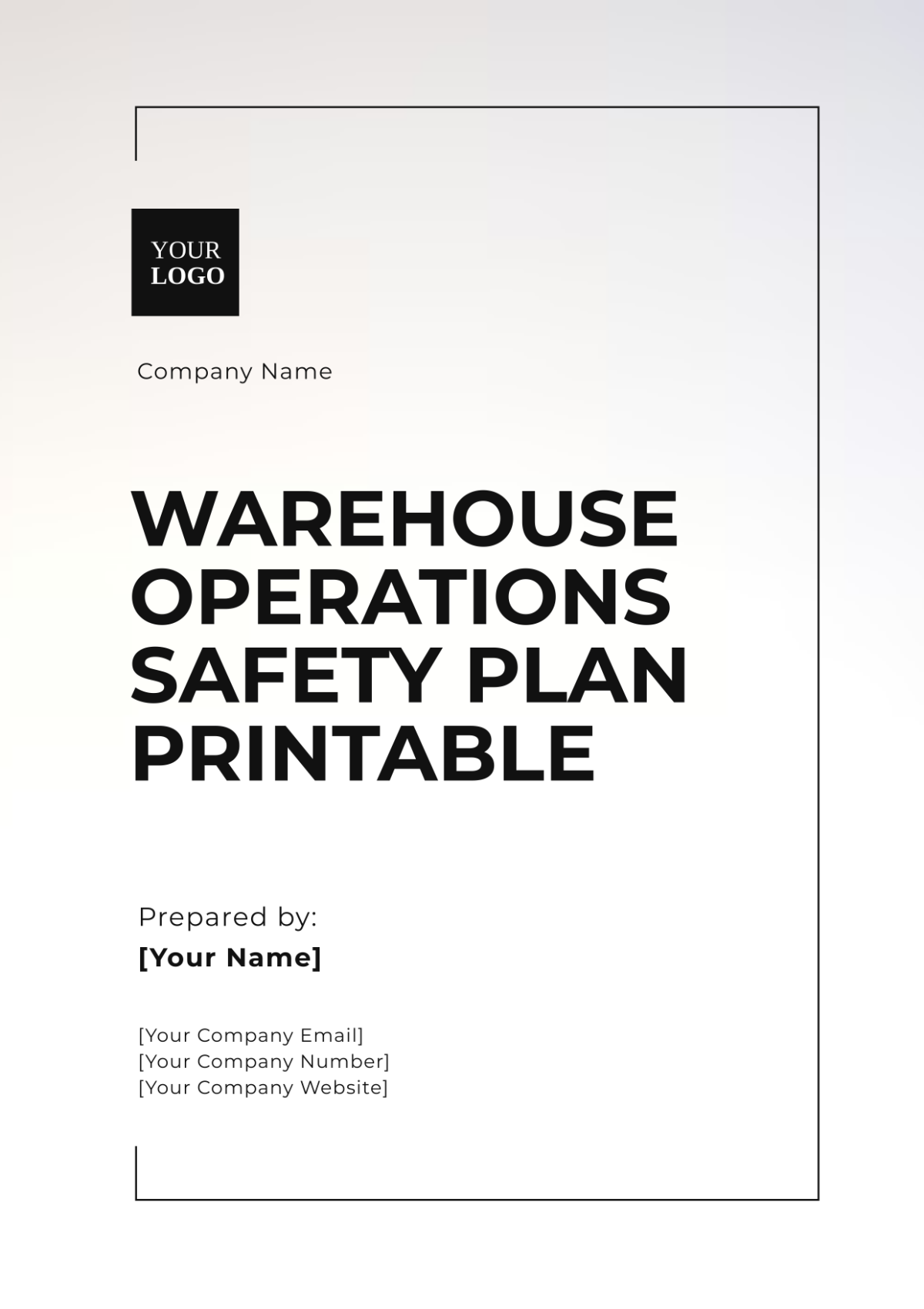
I. Introduction
The purpose of this Warehouse Operations Safety Plan is to ensure the safety and well-being of all employees at [Your Company Name] and to prevent accidents and injuries within the warehouse environment. This plan outlines procedures and guidelines to be followed for maintaining a safe working environment. A strong safety culture is critical, and all employees are encouraged to actively participate in safety initiatives.
II. General Safety Guidelines
A. Personal Protective Equipment (PPE)
All employees must wear the required PPE while inside the warehouse. The types of PPE required include:
Hard Hats: Must be worn in all areas where overhead hazards exist.
Safety Goggles: Required when working with hazardous materials or in areas where flying debris is possible.
High-Visibility Vests: Must be worn when working in areas with vehicular traffic.
Safety Gloves: Required when handling sharp objects or hazardous materials.
Steel-Toed Boots: Must be worn at all times to protect against foot injuries.
Employees are responsible for inspecting their PPE before each shift to ensure it is in good condition.
B. Proper Lifting Techniques
To prevent injuries, employees must use proper lifting techniques:
Keep your back straight.
Bend at the knees.
Use your legs to lift, not your back.
Do not twist your body while lifting.
Get help if the load is too heavy (loads over 50 lbs should always be lifted with assistance or equipment).
C. Emergency Exits
Emergency exits must be marked with illuminated signs and free of obstructions at all times. Employees should familiarize themselves with the locations of all emergency exits, which include:
Main Exit: Near the shipping and receiving area.
Secondary Exit: Adjacent to the break room.
Fire Escape: Located on the north side of the building.
Employees are encouraged to review emergency exit routes during safety meetings every month.
III. Equipment Safety
A. Forklifts and Pallet Jacks
Employees operating forklifts and pallet jacks must be trained and certified. Safety practices include:
Conducting pre-shift equipment checks, which include inspecting brakes, steering, and safety features.
The following designated pathways are marked on the floor.
Observing speed limits of 5 mph within the warehouse.
Using horns at intersections to alert other personnel.
Never carry passengers on forklifts or pallet jacks.
B. Conveyor Systems
Safety measures for conveyor systems include:
Conducting regular maintenance and inspections every six months to ensure optimal operation.
Providing proper training for all operators, including emergency shutoff procedures.
Ensuring emergency stop buttons are clearly visible and easily accessible within 10 feet of the conveyor system.
IV. Fire Safety
A. Fire Prevention
Preventative measures include:
Proper storage of flammable materials in designated cabinets that are marked.
Regularly cleaning up spills and ensuring that all materials are stored in their proper places.
Ensuring smoking is only allowed in designated areas, which are at least 50 feet away from flammable materials.
B. Fire Response
In the event of a fire:
Activate the nearest fire alarm immediately.
Follow the evacuation plan and proceed to the designated assembly area, which is the parking lot near the entrance.
Only use fire extinguishers if trained and if it is safe to do so. Employees should remember the acronym PASS (Pull, Aim, Squeeze, Sweep).
V. Training and Reporting
A. Safety Training Programs
All employees must undergo regular safety training, which includes:
Orientation for New Employees: Conducted during the first week of employment, covering general safety procedures and expectations.
Quarterly Refresher Courses: Mandatory for all employees to keep safety knowledge current.
Specialized Training for Specific Equipment: Conducted as needed for employees operating specific machinery or equipment.
B. Incident Reporting and Investigation
All incidents, regardless of severity, must be reported and investigated. The steps include:
Immediate reporting to a supervisor, preferably within 30 minutes of the incident.
Completion of an incident report form, which includes details such as the date, time, and nature of the incident.
Investigation by the safety team within 48 hours to determine the cause of the incident.
Implementation of corrective actions based on investigation findings, which should be documented and communicated to all staff.
VI. Conclusion
The Warehouse Operations Safety Plan is designed to foster a culture of safety and responsibility among all employees. By adhering to the guidelines and procedures outlined in this plan, we aim to minimize risks, ensure compliance with safety regulations, and create a work environment where safety is a shared priority. Continuous training, vigilance, and communication are key to achieving our safety objectives, and every employee plays a vital role in this endeavor. Together, we can maintain a safe and productive workplace.
- 100% Customizable, free editor
- Access 1 Million+ Templates, photo’s & graphics
- Download or share as a template
- Click and replace photos, graphics, text, backgrounds
- Resize, crop, AI write & more
- Access advanced editor
Enhance safety in your warehouse with the Warehouse Operations Safety Plan Printable Template from Template.net. This editable and customizable template allows you to tailor safety procedures to your specific operational needs. Its clear layout and comprehensive guidelines make it easy to communicate essential safety protocols to your team. By implementing this plan, you can create a safer work environment, ensuring compliance and protecting your workforce. Streamline your safety efforts today!
You may also like
- Finance Plan
- Construction Plan
- Sales Plan
- Development Plan
- Career Plan
- Budget Plan
- HR Plan
- Education Plan
- Transition Plan
- Work Plan
- Training Plan
- Communication Plan
- Operation Plan
- Health And Safety Plan
- Strategy Plan
- Professional Development Plan
- Advertising Plan
- Risk Management Plan
- Restaurant Plan
- School Plan
- Nursing Home Patient Care Plan
- Nursing Care Plan
- Plan Event
- Startup Plan
- Social Media Plan
- Staffing Plan
- Annual Plan
- Content Plan
- Payment Plan
- Implementation Plan
- Hotel Plan
- Workout Plan
- Accounting Plan
- Campaign Plan
- Essay Plan
- 30 60 90 Day Plan
- Research Plan
- Recruitment Plan
- 90 Day Plan
- Quarterly Plan
- Emergency Plan
- 5 Year Plan
- Gym Plan
- Personal Plan
- IT and Software Plan
- Treatment Plan
- Real Estate Plan
- Law Firm Plan
- Healthcare Plan
- Improvement Plan
- Media Plan
- 5 Year Business Plan
- Learning Plan
- Marketing Campaign Plan
- Travel Agency Plan
- Cleaning Services Plan
- Interior Design Plan
- Performance Plan
- PR Plan
- Birth Plan
- Life Plan
- SEO Plan
- Disaster Recovery Plan
- Continuity Plan
- Launch Plan
- Legal Plan
- Behavior Plan
- Performance Improvement Plan
- Salon Plan
- Security Plan
- Security Management Plan
- Employee Development Plan
- Quality Plan
- Service Improvement Plan
- Growth Plan
- Incident Response Plan
- Basketball Plan
- Emergency Action Plan
- Product Launch Plan
- Spa Plan
- Employee Training Plan
- Data Analysis Plan
- Employee Action Plan
- Territory Plan
- Audit Plan
- Classroom Plan
- Activity Plan
- Parenting Plan
- Care Plan
- Project Execution Plan
- Exercise Plan
- Internship Plan
- Software Development Plan
- Continuous Improvement Plan
- Leave Plan
- 90 Day Sales Plan
- Advertising Agency Plan
- Employee Transition Plan
- Smart Action Plan
- Workplace Safety Plan
- Behavior Change Plan
- Contingency Plan
- Continuity of Operations Plan
- Health Plan
- Quality Control Plan
- Self Plan
- Sports Development Plan
- Change Management Plan
- Ecommerce Plan
- Personal Financial Plan
- Process Improvement Plan
- 30-60-90 Day Sales Plan
- Crisis Management Plan
- Engagement Plan
- Execution Plan
- Pandemic Plan
- Quality Assurance Plan
- Service Continuity Plan
- Agile Project Plan
- Fundraising Plan
- Job Transition Plan
- Asset Maintenance Plan
- Maintenance Plan
- Software Test Plan
- Staff Training and Development Plan
- 3 Year Plan
- Brand Activation Plan
- Release Plan
- Resource Plan
- Risk Mitigation Plan
- Teacher Plan
- 30 60 90 Day Plan for New Manager
- Food Safety Plan
- Food Truck Plan
- Hiring Plan
- Quality Management Plan
- Wellness Plan
- Behavior Intervention Plan
- Bonus Plan
- Investment Plan
- Maternity Leave Plan
- Pandemic Response Plan
- Succession Planning
- Coaching Plan
- Configuration Management Plan
- Remote Work Plan
- Self Care Plan
- Teaching Plan
- 100-Day Plan
- HACCP Plan
- Student Plan
- Sustainability Plan
- 30 60 90 Day Plan for Interview
- Access Plan
- Site Specific Safety Plan
